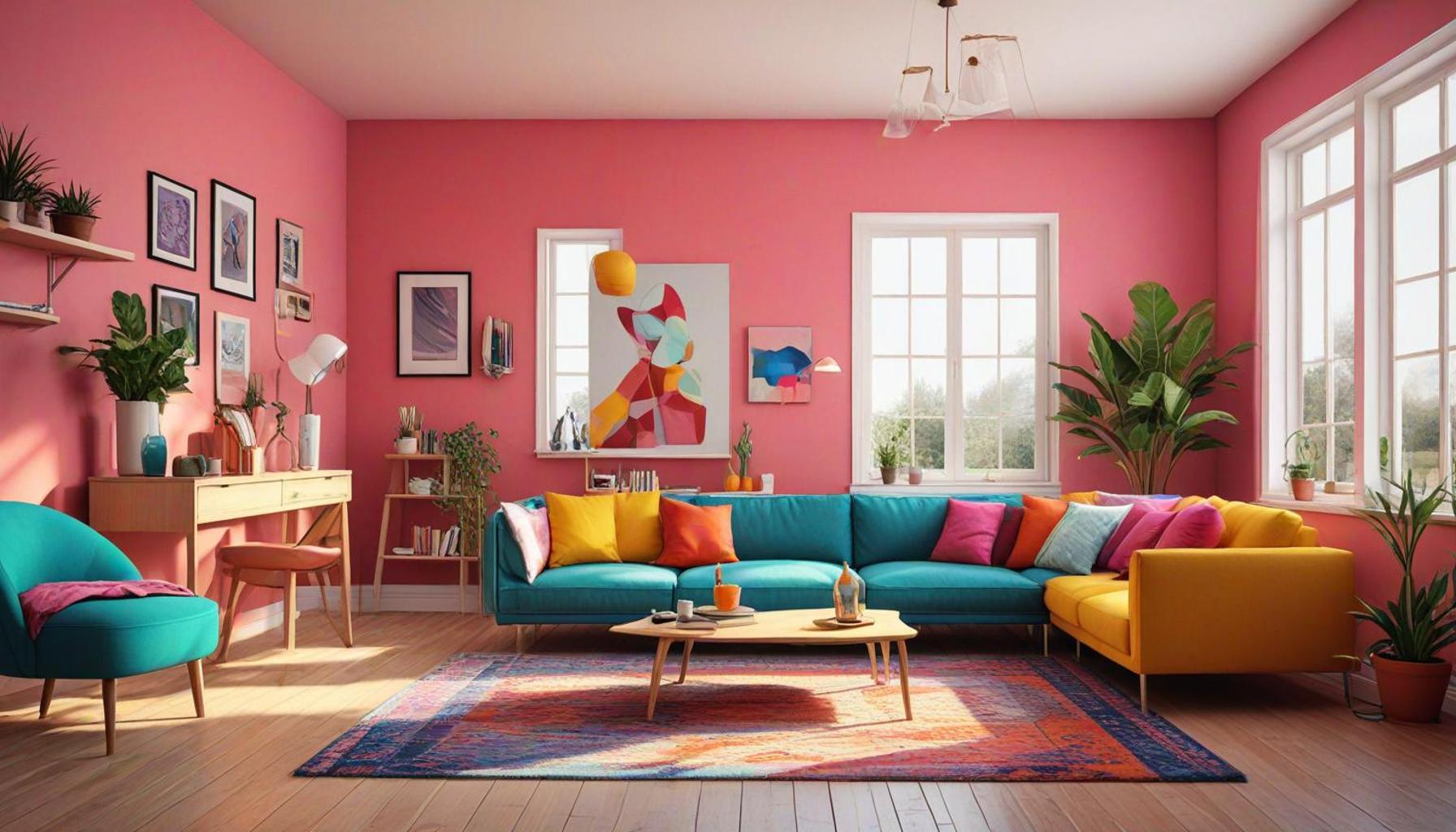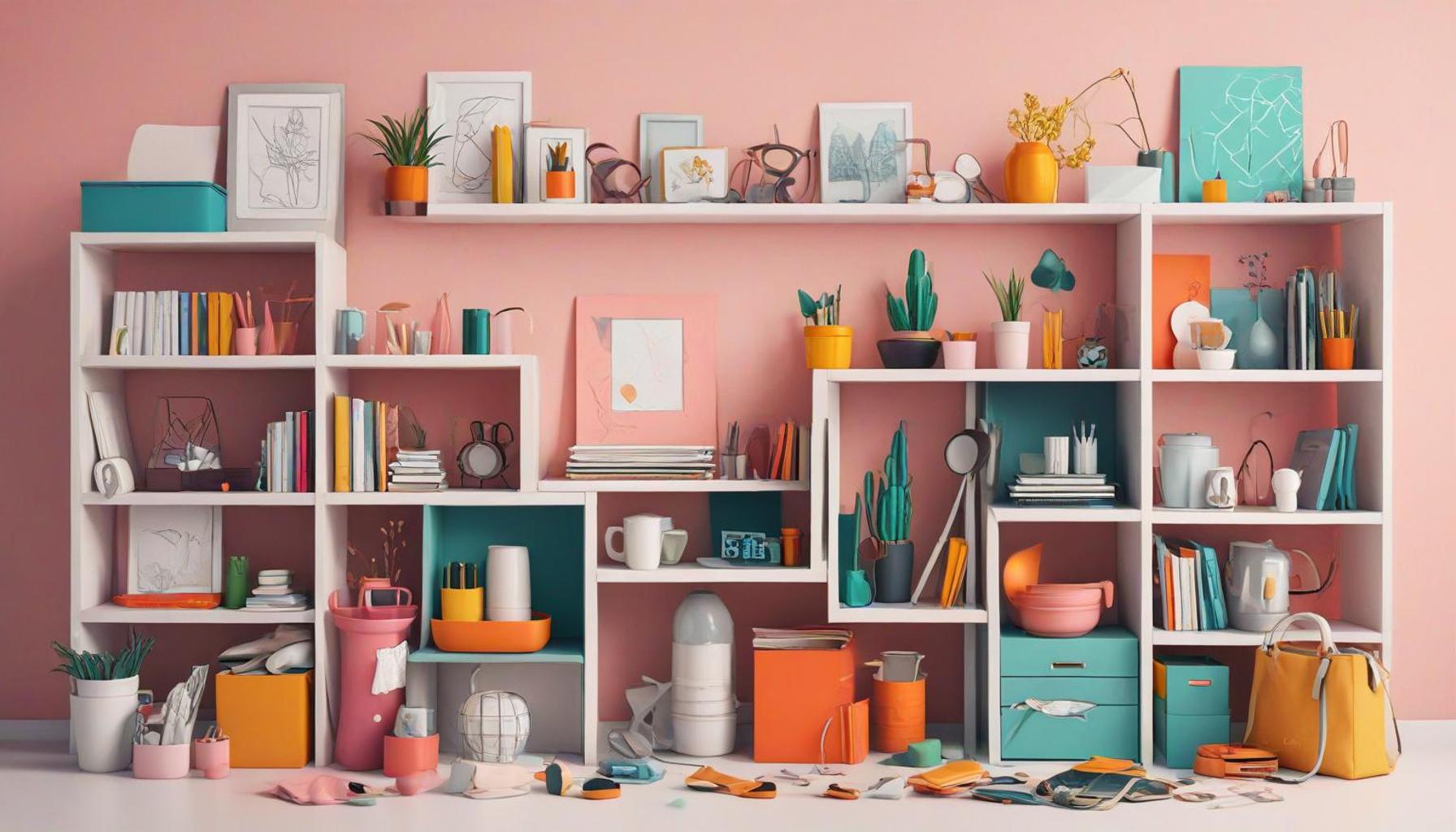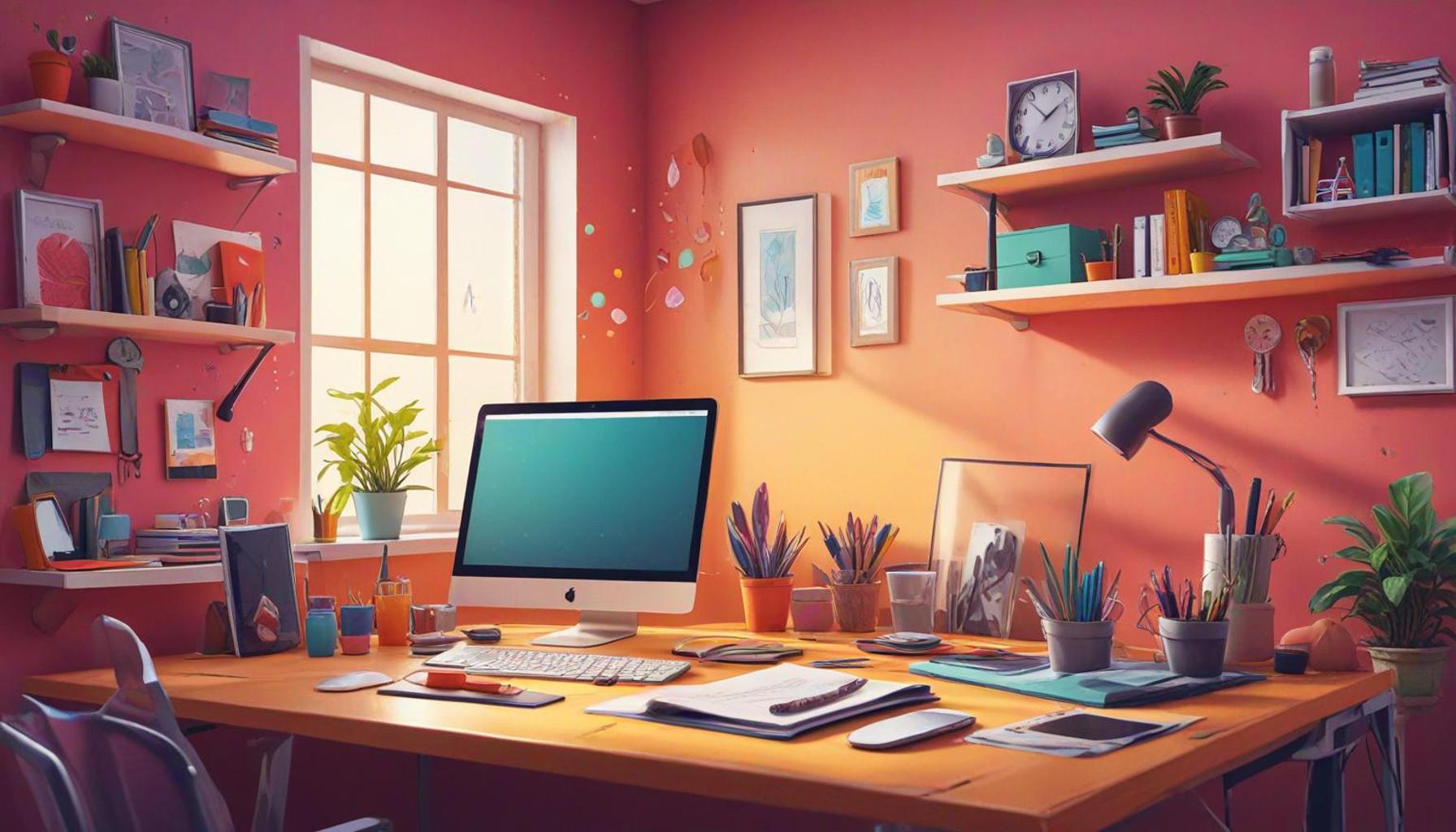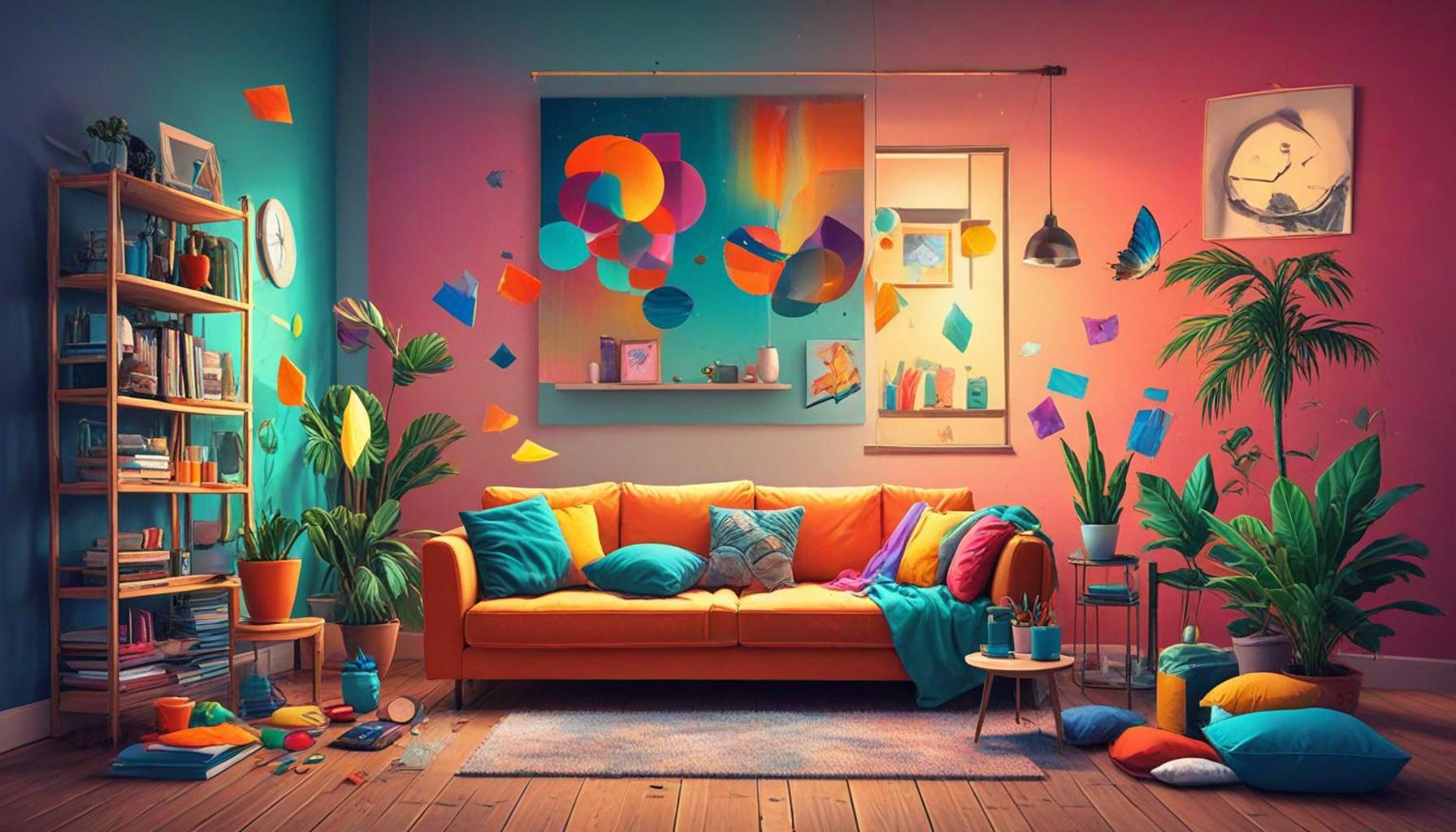Transforming Spaces: How Simplicity Living Influences Decoration and Interior Design

Embracing Minimalism in Interior Design
In a fast-paced world filled with excess, many are seeking clarity and calm through simplicity in their living spaces. The trend of simple living, or minimalism, is reshaping how we approach decoration and interior design, emphasizing a more mindful connection to our environments. This movement influences not only aesthetics but also our overall well-being.
The Core Principles of Minimalism
At the heart of minimalist design is a commitment to quality over quantity. This philosophy encourages individuals to evaluate their possessions carefully and let go of clutter that no longer serves a purpose. Embracing this minimalistic approach involves several core principles that can easily be incorporated into any home.
- Functional Furniture: The selection of furniture should focus on items that provide utility without being superfluous. For example, a stylish ottoman can serve as both a footrest and hidden storage, maximizing efficiency in smaller living areas.
- Neutral Color Palettes: Minimalist spaces often feature soft, muted tones like whites, grays, and earth shades to create a tranquil atmosphere. Such palettes promote tranquility, making rooms feel more spacious and less chaotic, which is particularly beneficial in urban apartments.
- Natural Materials: Using elements like wood, stone, and plants not only connects the indoor environment to nature but also fosters a sense of serenity. For instance, reclaimed wood furniture can add warmth and character without overwhelming a space.
Impact on Interior Design
Simplicity living is more than just a design aesthetic; it’s a profound lifestyle choice. This approach fosters several significant trends and habits that enhance our living experience.
- Mindful Consumption: Minimalism encourages individuals to prioritize sustainability and ethical production. For example, choosing furniture from local artisans or sustainably sourced materials contributes to environmental well-being while reducing one’s carbon footprint.
- Open Spaces: Creating open layouts enhances movement and flow within the home. By removing unnecessary walls and barriers, spaces feel larger and more inviting. This concept resonates especially well in the United States, where many newer homes embrace open-concept living.
- Personal Connection: Minimalism allows individuals to reflect their identity through a careful selection of items. This approach shifts the focus from owning numerous possessions to cherishing a few meaningful pieces, such as artwork or heirlooms that tell a story.
As we delve deeper into how simplicity living transforms the realm of decoration and interior design, we discover not only practical tips but also inspiring examples that can elevate any space. The minimalist movement encourages us to create environments that are not only visually appealing but also serve as sanctuaries for peace and creativity. By integrating minimalism into our homes, we take a step toward a more intentional way of living, ultimately leading to a more fulfilling life.
DISCOVER MORE: Click here to learn about the transformative power of simplicity
Reimagining Spaces with Minimalism
As the trend of simplicity living continues to gain momentum, its influence on decoration and interior design is becoming increasingly evident. Homeowners are embracing the idea that less is often more, leading to a transformation in how spaces are designed and experienced. This shift towards minimalism represents a deeper understanding of our relationship with our surroundings, prioritizing not just aesthetic appeal but personal well-being and functionality.
Designing for Well-Being
The minimalist approach to interior design is rooted in the idea that our environments can have a profound impact on our mental health. By fostering a sense of harmony and tranquility, simple living spaces are designed to reduce stress and enhance productivity. Several components contribute to creating an environment that promotes well-being:
- Decluttered Environments: Clutter can be overwhelming and distracting. By adopting minimalism, homeowners learn to let go of excess items, creating open spaces that invite calm and focus. This decluttering process not only brings clarity to the home but also encourages individuals to only hold onto what truly matters.
- Thoughtful Lighting: Natural light plays a crucial role in enhancing a minimalist design. Expansive windows and unobstructed views are central to creating bright, airy spaces that feel welcoming. Additionally, layering lighting—using dimmers and different fixtures—ensures environments can be adapted for various moods and activities.
- Inviting Textures: While color palettes may be neutral, the use of various textures can add warmth and personality to a minimalist space. Soft textiles, sleek metals, and rich woods can all harmonize within a simple design, inviting tactile engagement without overwhelming visual senses.
Creating Functional Spaces
Minimalism encourages not only aesthetic simplicity but also functional efficiency. This holistic approach has led to innovative trends in furniture and layout, optimizing spaces for their intended purposes. Some key aspects of functional minimalism include:
- Multi-Use Furniture: The rise of furniture designed for multiple purposes is more than a trend; it’s a necessity in many homes. Foldable tables, convertible sofas, and built-in storage are examples of how design can adapt to various needs without compromising on style.
- Open-Concept Designs: The move towards open layouts reflects a lifestyle that values connection and communication. This design trend blurs the lines between different living areas, making homes feel more cohesive and spacious while promoting a shared environment for family gatherings and social interactions.
- Incorporating Nature: Biophilic design—bringing natural elements into the living space—has gained traction in minimalist interior design. Incorporating plants, natural light, and organic materials helps create a calming ambiance, ultimately bridging the gap between the indoor and outdoor worlds.
As homeowners across the United States increasingly recognize the benefits of minimalism, the transformation of living spaces is evident. By simplifying their surroundings, individuals can cultivate environments that inspire creativity, foster well-being, and provide an authentic reflection of their identities. Minimalism is not just a design choice; it is a lifestyle choice that can redefine our relationship with the spaces we inhabit.
Embracing Minimalism in Color and Texture
One of the most striking elements of simplicity living is its approach to color and texture. The minimalist aesthetic often favors neutral palettes that create a serene environment, allowing the beauty of well-curated pieces to shine. This calming effect can transform any space into a tranquil retreat, aligning perfectly with the principles of simplicity living. Think soft whites, muted grays, and natural earthy tones that evoke a sense of peace and harmony.This color approach not only enhances overall well-being, but it also allows for versatility in decorating styles. By using a limited color scheme, homeowners can easily switch out accessories or art pieces to refresh their space without overwhelming visual clutter. Furthermore, incorporating natural textures – such as wood, stone, and textiles – provides depth to interiors while maintaining a clean and airy feel. This harmonious blend encourages creativity without compromising on functionality.As furniture becomes less ornate, emphasis shifts toward quality craftsmanship and sustainable materials. This reflects a growing awareness of the impact of consumer choices on the environment. For example, choosing handcrafted furniture made from reclaimed wood not only supports skilled artisans but also minimizes ecological footprints. This conscious effort to prioritize substance over superficiality becomes an essential tenet in interior design influenced by simplicity living. Exploring design through a lens of minimalism presents a unique opportunity for both homeowners and decorators alike. It challenges conventional wisdom about space usage, emphasizing the importance of creating environments that inspire tranquility and mindfulness. Indeed, embracing simplicity in decoration leads to a transformative experience that extends beyond aesthetics – it cultivates a lifestyle centered on sustainability and thoughtful living.
Functional Spaces with Purpose
In line with minimalism’s emphasis on efficiency, simplicity living encourages the design of spaces that serve multiple functions. For instance, a home office can easily double as a guest bedroom simply by incorporating versatile furniture like a foldable desk or a sofa bed. This adaptability not only maximizes space but also aligns with the principle of reducing unnecessary items.Moreover, incorporating smart storage solutions plays a vital role in maintaining an uncluttered environment. Built-in shelves, hidden compartments, or multipurpose furniture can help organize essential items beautifully. This way, residents can enjoy the positive aspects of minimalism without sacrificing comfort or style. The benefits of such a design philosophy extend beyond aesthetics; they promote a lifestyle that is functional, flexible, and aligned with conscious living. By recognizing the importance of simplicity in their spaces, individuals can craft environments that genuinely reflect their values, encouraging a deeper connection to their homes and the world around them. In summary, the impact of simplicity living on decoration and interior design transcends mere visual appeal. It influences how we engage with our environments, turning ordinary spaces into purposeful havens that nurture creativity, sustainability, and serene living.
DISCOVER MORE: Click here to learn about the benefits of meditation</p
Essential Elements of Minimalist Design
As simplicity living influences interior design, several essential elements define the aesthetic that distinguishes minimalism from other styles. Recognizing and implementing these elements can transform not only the visual aspect of a home but also its function and emotional impact.
Color Palettes that Calm
One of the hallmarks of minimalism is the use of neutral color palettes. Soft, muted tones like whites, beiges, and grays dominate minimalist interiors, allowing the space to breathe and creating a serene backdrop. Some homeowners might choose to incorporate occasional pops of color through art or decorative accents, but the essence remains firmly rooted in simplicity. Recent studies show that such calming colors can evoke tranquility, ultimately influencing mood and enhancing relaxation. This is particularly valuable in areas like bedrooms or living spaces where comfort is paramount.
The Power of Balance and Symmetry
Minimalist design often emphasizes the importance of balance and symmetry within a space. Achieving visual harmony is done by carefully arranging furniture and décor to create a sense of equilibrium. Designers frequently apply the rule of thirds, achieving a harmonious composition that guides the viewer’s eye through the room. This attention to balance does not only contribute to aesthetic appeal but also cultivates mindful living as individuals are surrounded by peace rather than chaos.
Quality Over Quantity
As homeowners gravitate towards simplicity living, there is a notable shift from purchasing numerous generic items to choosing a few high-quality pieces that resonate deeply. This movement not only underscores a commitment to craftsmanship and ethical sourcing but also aligns with a sustainable lifestyle. Furniture made from sustainable materials and artisanal products are not just statements of style but also reflections of personal values, encouraging individuals to align their homes with their lifestyle choices. Brands like West Elm and Crate and Barrel have embraced this trend, offering high-quality, sustainably made furniture that embodies the minimalist ethos.
Innovative Organization Techniques
With a focus on minimalism, innovative organization techniques are becoming essential components of interior design. The concept of ‘functionality’ extends beyond furniture pieces into clever storage solutions that keep homes neat while maintaining the aesthetic. For instance, utilizing under-the-bed storage, hidden cabinetry, and modular shelving systems encourages homeowners to organize belongings invisibly. These techniques not only contribute to an uncluttered environment but also enhance usability, making it easier to maintain a simple living style.
The Role of Personalization in Minimalism
While minimalistic spaces are often associated with simplicity, there’s a common misconception that they lack personality. In reality, successful minimalist designs thoughtfully incorporate personalized elements that reflect the homeowner’s identity. This may include a curated selection of art pieces, treasured keepsakes, or family photographs that serve as focal points without overwhelming the space. Attention to personalization adds depth to a minimalist environment, allowing it to feel warm and inviting while staying true to the principles of simplicity.
The intersection of simplicity living and decoration is reshaping how Americans think about their homes. As more individuals adapt these principles into their interiors, the transformation of spaces exemplifies the power of minimalism—both as a design choice and a holistic lifestyle. By creating peaceful, functional, and aesthetically pleasing environments, homeowners can profoundly improve their quality of life while cultivating a space that represents their essence and values.
DISCOVER MORE: Click here for insightful tips
Conclusion: Embracing Simplicity in Design
In summary, the trend of simplicity living is not merely a passing phase in interior design; it represents a profound philosophical shift that encourages us to reflect on our surroundings and lifestyle choices. By adopting minimalism, homeowners are discovering that transforming spaces can lead to greater contentment, functionality, and expression of personal identity. The embrace of neutral color palettes, attention to balance and symmetry, and the emphasis on quality over quantity collectively foster environments that resonate with peace and clarity.
Furthermore, the innovative organization techniques and the thoughtful inclusion of personalized elements highlight that minimalism can indeed celebrate individuality while sustaining an uncluttered ambience. As design innovators continue to challenge traditional conventions, the landscape of interior design is evolving into one that champions sustainable practices and conscious consumption. Homeowners are now more inclined to invest in ethically sourced furnishings that not only serve a purpose but also reflect their values, thereby enhancing the story of the space they inhabit.
As we move forward, the integration of simplicity living into our homes invites us to consider the potential of our immediate environment. It urges us to create living spaces that are not only aesthetically pleasing but also conducive to mental well-being. By prioritizing meaningful design choices, individuals can cultivate not just a home, but a sanctuary that embodies their lifestyle and aspirations. The journey towards simplicity in decoration and interior design encourages us to redefine what truly matters in our lives—making each space a testament to who we are.


